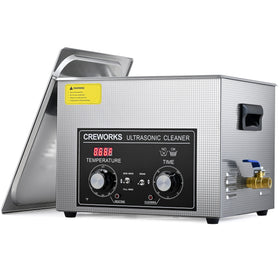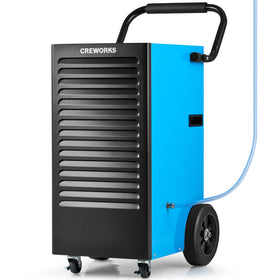With over 10000+ orders
With over 10000+ orders
You're pressing the gas pedal, but your car feels sluggish and unresponsive. That frustrating hesitation might be a sign of dirty fuel injectors – a common problem that can drain your wallet at the pump and leave your engine struggling to perform. The good news is learning how to clean fuel injectors can save you hundreds in mechanic fees and get your engine running like new again.

Your car has a way of telling you when its fuel injectors are crying out for attention. Here are the telltale signs of dirty fuel injectors:
Your engine runs rough at idle, feeling more like a washing machine than a finely tuned machine. This happens because clogged fuel injectors can't deliver the steady stream of fuel your engine needs. You might notice your RPMs bouncing up and down when you're stopped at a light, or your car hesitating when you step on the gas.
If you're filling up more often than usual, that's another red flag. Recent studies show that clean fuel injectors can improve your fuel economy by up to 12% compared to dirty ones. That's like getting an extra gallon of gas free for every tank you fill.
When it comes to cleaning fuel injectors, you've got three main options. Let's break down how each one works and what you can expect:
This is the quick-fix option – just pour the cleaner into your gas tank.
While it's the easiest method, it's also the least effective for heavy buildup. Think of it like trying to clean a really dirty pot by just running water through it – it might help a little, but it won't tackle the tough stuff.
Most auto shops offer fuel injector cleaning services, using specialized equipment to force cleaning solution through your injectors.
While effective, these services typically cost $150-300, and you'll need to leave your car at the shop.
Ultrasonic cleaners use high-frequency sound waves to blast away carbon deposits at a molecular level. While chemical cleaners primarily work on surfaces they can flow across, ultrasonic cleaning reaches every part of the injector - from the visible outer surfaces to the microscopic spray holes and internal passages.
You can actually see the difference in spray patterns before and after ultrasonic cleaning. A properly cleaned injector produces a fine, cone-shaped mist of fuel droplets. In contrast, a clogged or partially cleaned injector often shows irregular spray patterns, with visible streams or uneven distribution that can affect engine performance.

The real advantage becomes clear when you look at the cleaning consistency. While chemical cleaners might clean some areas better than others, ultrasonic cleaning works evenly across all surfaces - from the injector pintles to the spray holes. This thorough cleaning ensures your fuel injectors deliver the precise spray pattern your engine needs for optimal performance.
If you're comfortable working on your car, ultrasonic cleaning gives you professional-grade results right in your garage. Here's your step-by-step guide:
An ultrasonic cleaner (40kHz frequency works best for automotive parts)
Quality cleaning solution
Basic hand tools for removing injectors
Safety glasses and chemical-resistant gloves
Clean workspace with good ventilation
1. Safety First
Park on level ground
Let the engine cool completely
Disconnect the battery
Have a fire extinguisher nearby (you're working with fuel components)
2. Remove the Fuel Injectors
Relieve fuel system pressure
Disconnect the fuel rail
Remove injectors carefully
Mark their positions for reinstallation
3. Ultrasonic Cleaning
Fill your cleaner with the appropriate solution
Place injectors in the cleaning basket
Run a 15-minute cycle at 140°F (60°C)
For stubborn deposits, run a second cycle
4. Testing and Reinstallation
Check spray patterns
Replace O-rings (while you're there)
Reinstall in original positions
Double-check all connections
When it comes to ultrasonic cleaners, size and power matter for cleaning fuel injectors. The Creworks 180W Ultrasonic Cleaner is a solid choice that won't break the bank.
Here's why it works so well for fuel injectors: Its 6.5L tank gives you plenty of room to clean multiple injectors at once. The 40kHz frequency is just right for getting into all those tiny fuel passages without damaging sensitive parts. Plus, it heats the cleaning solution up to 175°F, which helps break down tough carbon deposits faster than cold cleaning alone.
The best part about this cleaner is that it's built tough with stainless steel inside and out, so it'll handle years of grease and grime from your garage. And when you're not cleaning fuel injectors, you can use it for all sorts of other car parts too.
Mechanics who use ultrasonic cleaners daily swear by these tips:
Always use fresh cleaning solution
Keep injectors vertical during cleaning
Consider replacing O-rings while injectors are out
Test electrical resistance before reinstalling
Keep your freshly cleaned injectors running smoothly with these proven strategies:
Use top-tier fuel from reputable stations
Add a quality fuel system cleaner every 3,000 miles
Replace your fuel filter according to schedule
Address check engine lights promptly
While ultrasonic cleaning is highly effective, some situations call for expert help:
If you hear clicking or tapping from your injectors
When check engine lights persist
If you're not confident working with fuel systems
For vehicles under warranty

Clean fuel injectors play a crucial role in your engine's health and performance. The choice between cleaning methods comes down to your comfort level with car maintenance and the severity of the clogging. Ultrasonic cleaning stands out as the most thorough solution, delivering professional-grade results at a fraction of the cost of repeated mechanic visits.
A proactive approach to fuel injector maintenance pays off in multiple ways. You'll enjoy better acceleration, improved fuel economy, and a smoother-running engine. Plus, you'll avoid the headache of more serious engine problems down the road.
The key lies in recognizing the early warning signs and taking action before small issues become major problems. By following the steps outlined in this guide, you'll have the knowledge and confidence to keep your fuel injectors clean and your engine running at its best.
Got questions about cleaning your fuel injectors? Drop them in the comments below, and we'll help you get your engine back to peak performance.











